How Shifting U.S. Policy Impacts Pharmaceutical Strategy
On May 5, 2025, President Donald Trump signed an executive order, Promoting American-Made Prescription Drugs. While the policy is primarily focused on bolstering U.S.-based pharmaceutical manufacturing, its implications reach far beyond domestic borders. Pharmaceutical leaders around the globe, especially those managing complex, multi-country supply chains, should take note.
This executive action signals a regulatory shift that could influence how facilities are approved, how inspections are conducted, and how quickly companies can bring products to market. It follows closely behind a wave of short-lived tariffs and reinforces a broader pattern of government-led efforts to restructure the pharmaceutical manufacturing landscape.
A Strategic Tilt Toward U.S. Manufacturing
The May 5 order directs the FDA to prioritize domestic production by:
- Accelerating approvals for American pharmaceutical facilities
- Offering early-stage regulatory support to U.S.-based manufacturers
- Raising inspection frequency and fees for foreign manufacturing sites
- Enhancing enforcement of API source transparency and potentially publishing non-compliant facilities
Additionally, the EPA has been tasked with speeding up the permitting process for pharmaceutical construction, while other federal agencies must coordinate efforts through a single point of contact.
While these reforms are meant to reduce red tape for U.S. manufacturers, they simultaneously create new headwinds for international facilities that may face more scrutiny, longer approval timelines, and reputational risks if flagged for non-compliance.
Regulatory Shifts Are Causing Decision-Making Paralysis
As with earlier policy changes, including recent tariff activity, this executive order is contributing to strategic uncertainty. How quickly will the FDA operationalize these mandates? How aggressively will they enforce compliance abroad? The answers remain unclear, but the direction of travel is not.
When faced with ambiguity, many organizations freeze. Strategic projects stall. Modernization plans get shelved. And opportunities to cut long-term costs are missed.
That hesitation is understandable, but it carries risks of its own.
Use This Time to Build Long-Term Advantage
Pharmaceutical operations don’t turn on a dime. Modernizing systems, aligning documentation, and mitigating regulatory risk take time. Those who start now will be ready when enforcement tightens or the next policy shift adds pressure.
Here’s what proactive organizations are doing today:
- Updating systems to improve speed and regulatory resilience
- Leveraging AI to streamline labeling, submissions, and compliance
- Centralizing documentation to increase agility across regions
These aren’t just short-term defenses. They’re long-term value drivers.
Preparing Now Reduces Costs Later
While some companies are pausing amid policy changes, others are investing. And those investments are positioning them for faster approvals, fewer errors, and greater flexibility. Getting ahead of regulatory demands today can mean avoiding costly rework, delays, and compliance setbacks tomorrow.
Uncertainty is hard to manage, but modernization is not. You don’t need to predict every policy change. You just need to be ready when they arrive.
If you’re considering how to better align your systems with emerging regulatory trends, we’re here to help.
Let’s explore how to reduce your risk, improve efficiency, and stay ahead, no matter what policy shifts come next. Contact Glemser today to get started.


